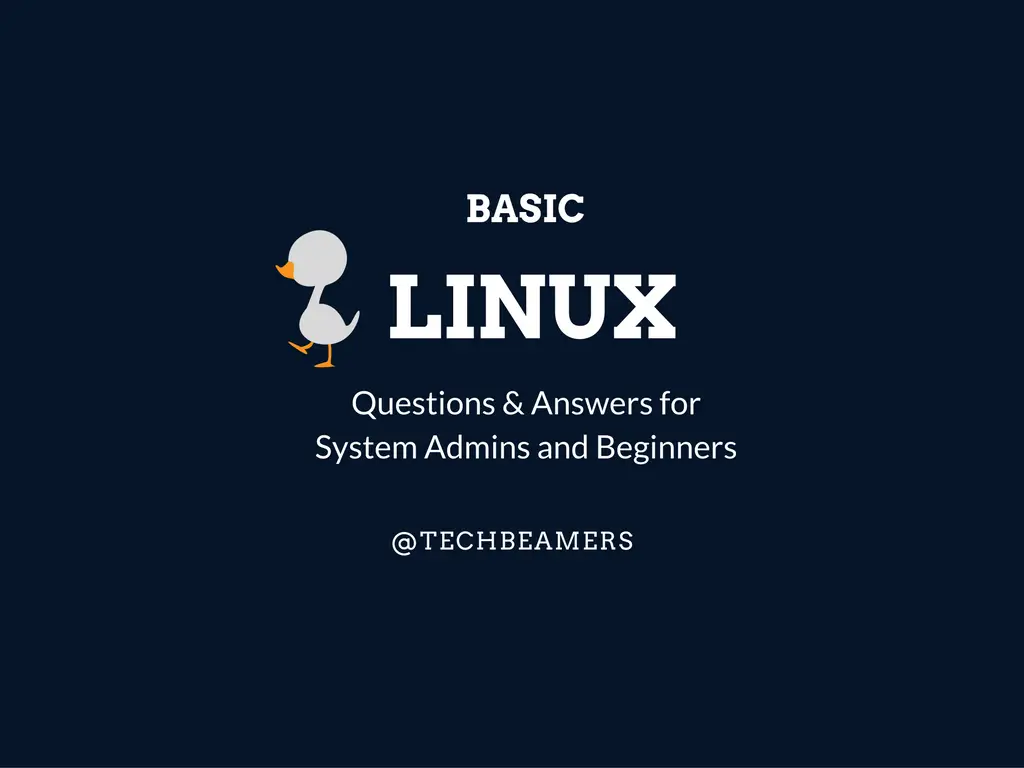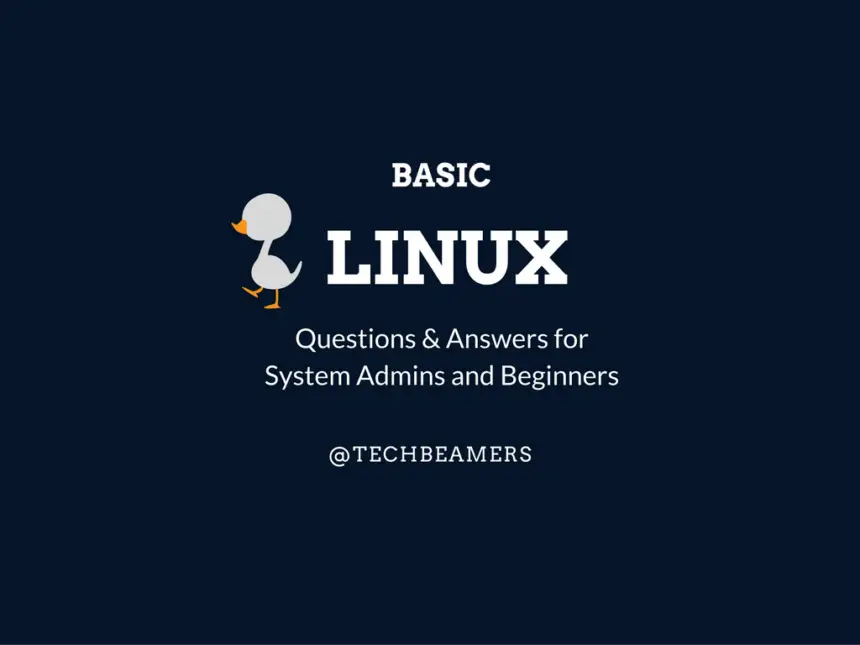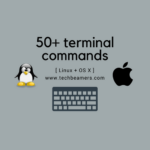Are you ready to put your Linux skills to the test? This tutorial contains 30 Linux basic questions and answers that will challenge your understanding.
It is important to realize that Linux is a powerhouse and drives many of the world’s most powerful systems, from supercomputers to Internet servers, and even your Android device.
That’s why it is even more important to explore various Linux commands and techniques. We’ll certainly focus on the most common commands that system admin and end-users use for their day-to-day work.
By going through this tutorial, you’ll gain a deeper understanding of Linux fundamentals and the skills needed to succeed in any technical interview.
So what are you waiting for? Let’s dive in and see how much you know about Linux!
30 Linux Basic Questions You Should Know.

Set-1 of Linux Basic Questions and Answers
Firstly, let’s begin with the 10 Linux questions around the most basic commands.
Q-1. Which of the following introduced the flavor of UNIX named Solaris?
A. HP
B. IBM
C. Digital Equipment Corp
D. Sun Microsystems
Q-2. Which of the following is not a variant of UNIX?
A. Solaris
B. AIX
C. IRIX
D. AS400
Q-3. In which language are the system calls implemented in Unix?
A. C
B. C++
C. Assembly Language
D. Fortran
Q-4. Which of the following processes is given the name “super daemon” in Unix?
A. sysinit
B. init
C. inetd
D. proc
Q-5. What is the name of the method that the kernel uses to minimize the frequency of disk access?
A. Pooling
B. Spooling
C. Buffer cache
D. Swapping
Q-6. What do the files wtmp and utmp maintain?
A. Temporary system data
B. User login-logout log
C. The user’s command execution log
D. The user’s su and sudo attempts
Q-7. What approach does an application use to communicate with the kernel?
A. System Calls
B. C Programs
C. Shell Script
D. Shell
Q-8. What is the purpose of <dmesg> command?
A. Shows user login logoff attempts
B. Shows the Syslog file for info messages
C. kernel log messages
D. Shows the daemon log messages
Q-9. What does the following command mknod myfifo b 4 16 do?
A. Will create a block device if the user is a root
B. Will create a block device for all users
C. Will create a FIFO if a user is not the root
D. None of the above
Q-10. Which of the following commands is used to set terminal IO characteristics?
A. tty
B. ctty
C. ptty
D. stty
Set-2 of Linux Basic Questions and Answers
Secondly, let’s cover the next set of 10 Linux questions around the intermediate-level commands.
Q-11. Which of the following options of the ls command displays the file inode number?
A. –l
B. -o
C. –a
D. –i
Q-12. Which of the following actions is performed by find / -name ‘*’ command?
A. List all files and directories recursively starting from /
B. Print a file with name * in /
C. List all files in / directory
D. List all files and directories in / directory
Q-13. Which of the following commands is used to display the octal value of the text?
A. octal
B. text_oct
C. oct
D. od
Q-14. Which of the following commands displays the contents of a compressed text file?
A. cat
B. type
C. zcat
D. print
Q-15. What is the command to change the group ownership of a file?
A. cgrp
B. chgrp
C. change
D. group
Q-16. Which command is used to extract the intermediate result in a pipeline?
A. tee
B. extract
C. exec
D. none of the above
Q-17. Which command is used to extract a column from a text file?
A. paste
B. get
C. cut
D. tar
Q-18. Which of the following command display the disk consumption of any directory?
A. du
B. ds
C. dd
D. dds
Q-19. Which command is used to take the backup in Unix?
A. backup
B. cpio
C. zip
D. gzip
Q-20. Which command creates an empty file if it does not exist?
A. cat
B. touch
C. ed
D. read
Set-3 of Linux Basic Questions and Answers
Thirdly, let’s finalize this tutorial with the 10 Linux questions around the most essential Linux commands.
Q-21. Which option of the rm command removes a directory including all its subdirectories?
A. –b
B. –o
C. –p
D. –r
Q-22. Which command is used to identify the file type?
A. Type
B. File
C. Finfo
D. Info
Q-23. What is the command to determine the path of an executable file?
A. which
B. where
C. wexec
D. what
Q-24. What is the command to count the number of characters in a file?
A. grep
B. wc
C. count
D. cut
Q-25. Which of the following commands displays one page of output at a time?
A. less
B. sed
C. pause
D. grep
Q-26. Which of the following commands displays the user id in its output?
A. ls
B. help
C. date
D. ls –l
Q-27. Which command displays all the files in your current directory and its subdirectories including the hidden files?
A. ls –aR
B. ls –a
C. ls –R
D. ls –l
Q-28. Which command changes default permissions for files and directories at the time of creation?
A. chmod
B. chown
C. umask
D. chgrp
Q-29. Which of the tar options displays the list of files in a tape archive format?
A. cvf
B. tvf
C. xvf
D. ovf
Q-30. Which of the following commands displays the current date in the format dd/mm/yyyy?
A. date +%d/%m/%Y
B. date +”%d/%m/%Y”
C. date +/%d/%m/20%y
D. date +”/%d/%m/20%y”
Enjoyed the Linux Basic Questions and Answers set?
We are hopeful that the above Linux basic questions and answers will help you immensely. And you’ll do well in your upcoming interviews.
It would be great if you let us know your feedback on this post.
Also, you can ask us to write on a topic of your choice. We’ll add it to our writing roadmap.
Quick Reference for You
- File Handling Quiz in Python Part II
- Python File Handling Quiz Part I
- Top SQL Query Questions for Practice
- 30 Linux Interview Questions
- 30 Questions on List, Tuple, and Dictionary in Python
Lastly, if you enjoyed the post, then please care to share it with friends and on social media.
Keep Learning,
TechBeamers.









